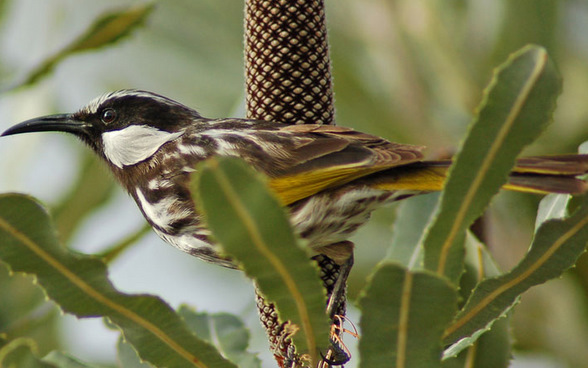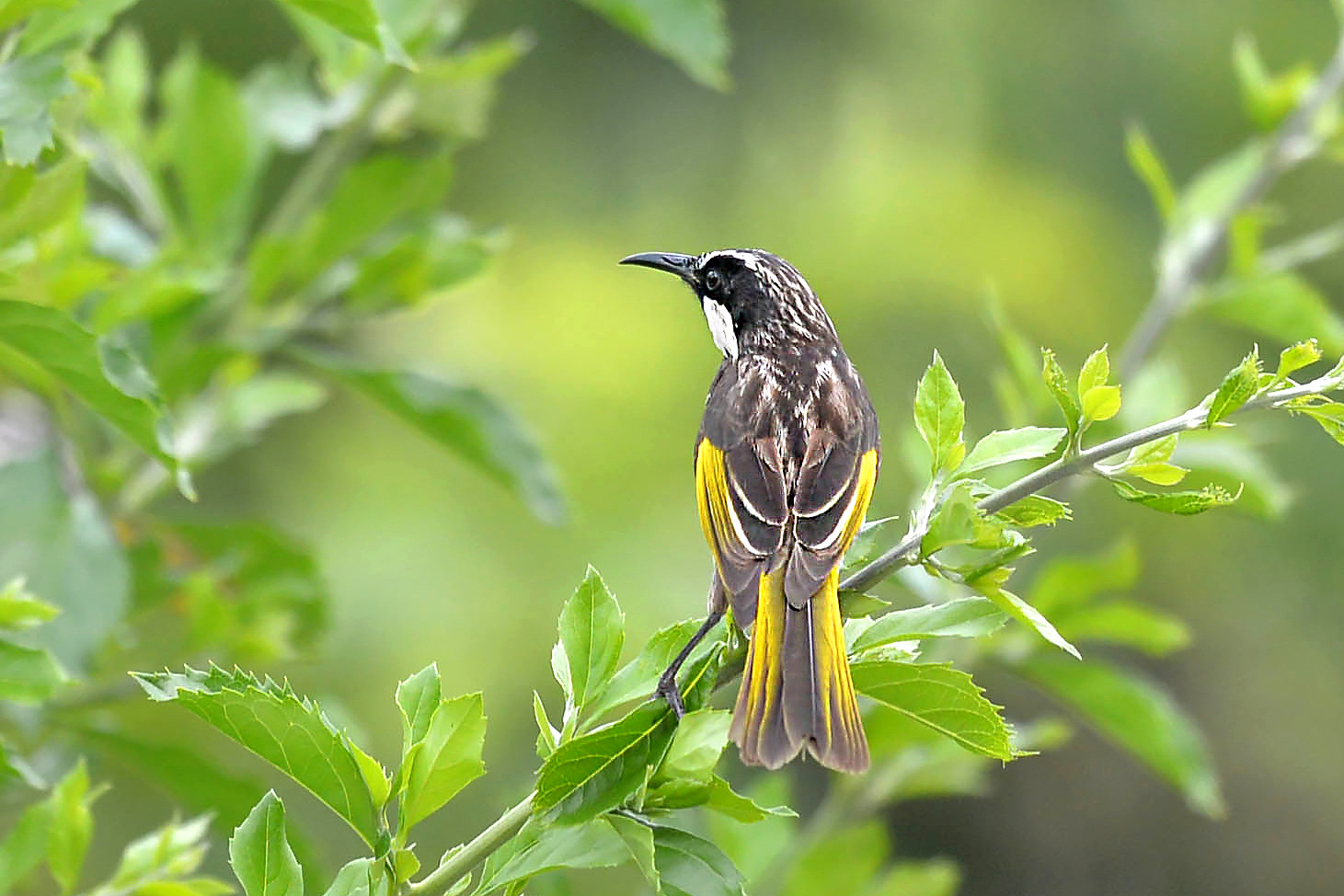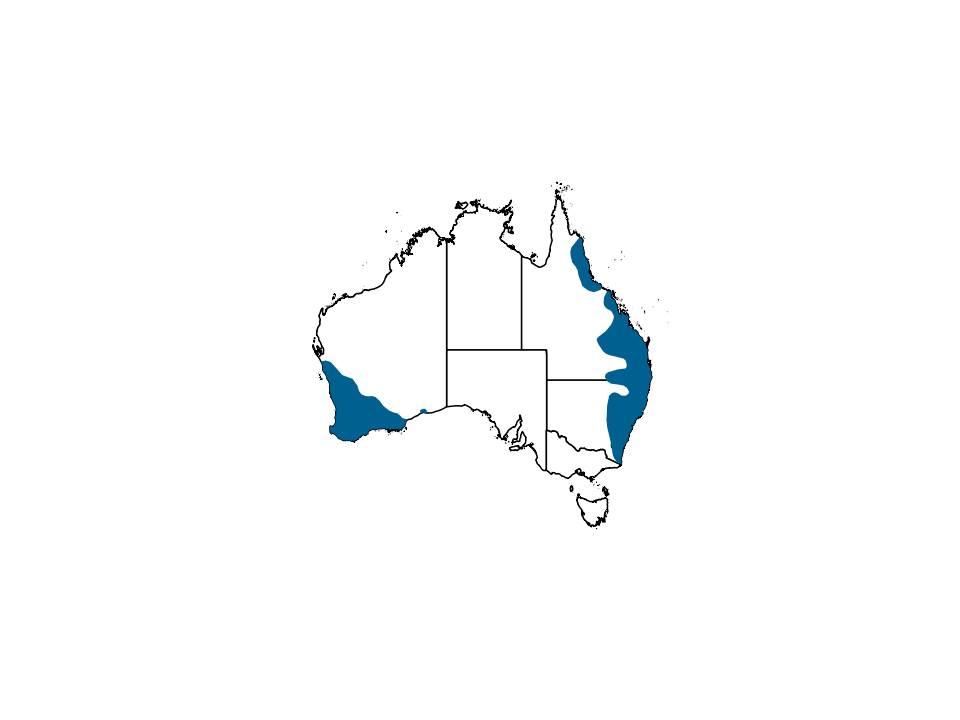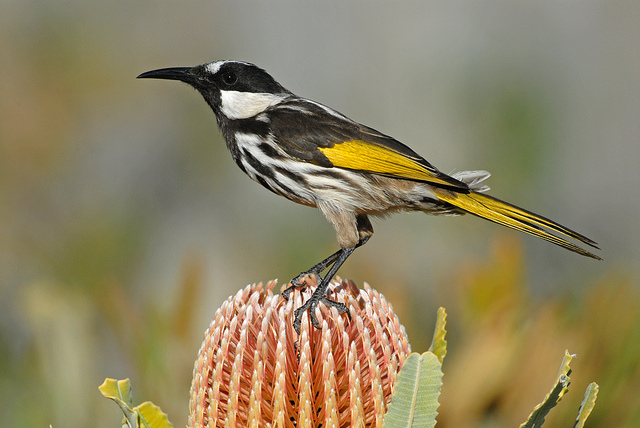Behaviour
Call
Squeaky “chip-chew, chippy chew” and “quick chip” or “hiccup”; Flight song “twee-ee-twee-ee”; Alarm call rapid “hee-hee-hee”
Diet
Mainly nectar and some insects. Forages on flowers, bark or in the air.
Flight
Active and noisy with swift, erratic flight.
Breeding
Birds pair monogamously for the breeding season, with males defending breeding territories that can be held for several years. Males aggressively attack other birds of their own and other species during the breeding season, but not familiar birds such as their own mates, relatives and resident neighbours. The female builds a cup-shaped nest from twigs, bark, and other plant materials, lined with pieces of flowers (e.g. Banksias, Isopogons). The nest is placed low in forked branches of trees or shrubs, often close to the ground, well-concealed in dense foliage or in long grass. The female lays 1 - 3 eggs. The female incubates the eggs for around 15 days. Both parents feed nestlings for 15 days.
Field Guide
Improve your identification skills. Download your White-cheeked Honeyeater field guide here!





